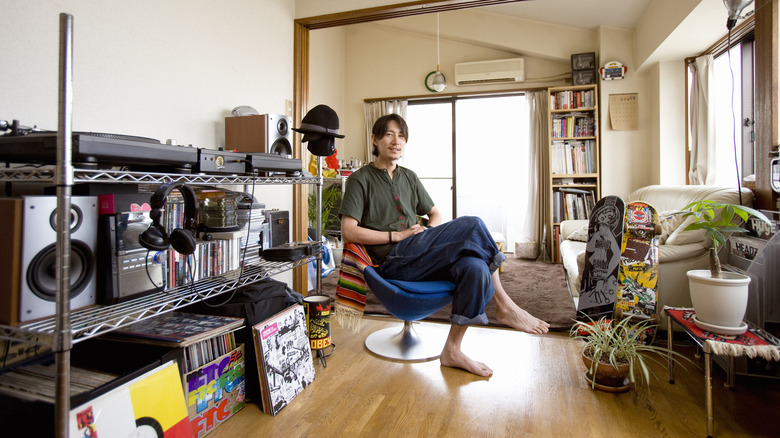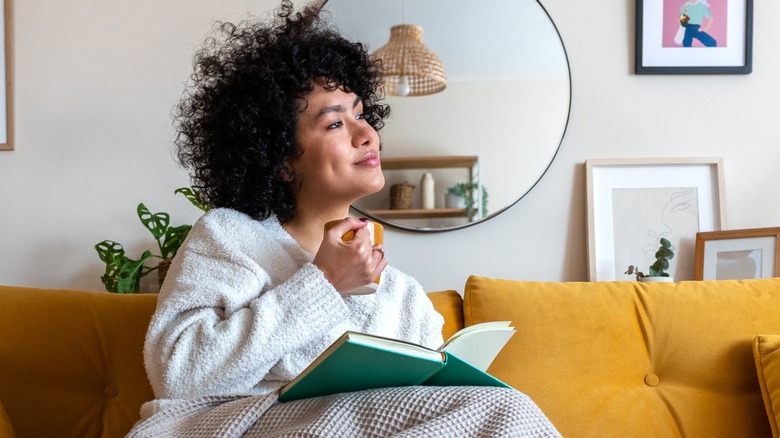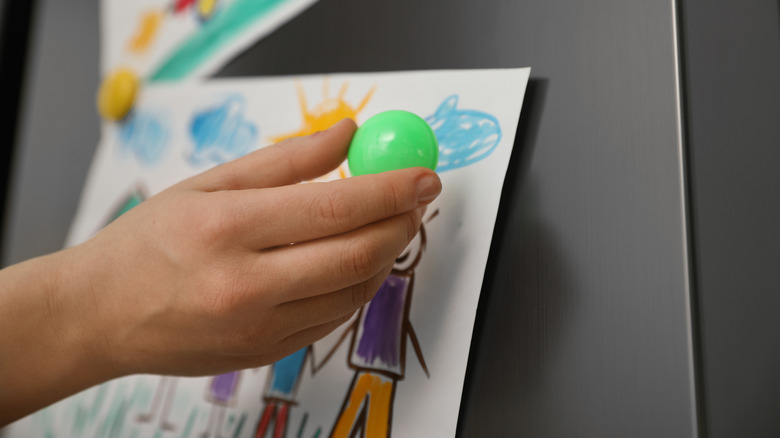'Comfort Decorating' Is The Movement Prioritizing Personality Over Aesthetic
Comfort decorating is the rebellious notion that our homes should be filled with happy, sensory experiences that make us feel good, not project a perfect self-image or impress strangers on the Internet. Imagine that your doorbell rings at this very moment. You weren't expecting any visitors, but when you open the door, a family member leans in for a hug and marches confidently inside. While you might be genuinely happy to see them, you would probably start to nervously shift piles of clutter, apologize for the "mess," and maybe even hide an embarrassing artifact under the coffee table. Our homes may be good mirrors of our personalities, but we don't always like to have everything on display; some things feel too personal, and others aren't "aesthetically pleasing" but are necessary to have, like tissue boxes and spare charging cords. A comfort decorator would say to stop fussing about perfection and let it be!
Your favorite holiday-themed throw blanket might look strange on the couch in the middle of April, but it's the best blanket in the house for cuddling up with a movie. That handmade birthday card from your child may not fit the vibe of your décor, but it makes you smile every time you see it pinned to the fridge. Comfort decorating isn't just a trendy non-trend; it actually has some real psychological benefits. Learn more about the perks of imperfection and how you can implement comfort decorating in your home.
The surprising benefits of comfort decorating
One of the biggest benefits of comfort decorating is its use of nostalgic, sentimental, and soothing items to create a sense of time and place. In an interview with the American Psychological Association, Dr. Krystine Batcho explained, "Nostalgia is an emotional experience that unifies." She continued, "Nostalgia, by motivating us to remember the past in our own life, helps to unite us to that authentic self and remind us of who we have been and then compare that to who we feel we are today." In other words, nostalgic and sentimental items are amazing for grounding you in the present moment and helping you think fondly of your past.
While comfort decorating depends heavily on nostalgia and emotions, physical comfort is also an important aspect of the trend. That fancy white cloud couch may look good on Instagram, but it isn't worth keeping in your home if it's uncomfortable to use and a pain to maintain. In most cases, your whole household will feel much happier with their worn-out but reliable old couch. Your favorite blanket makes you feel cradled in a hug every time you use it, even if it's not on-trend, and the spare charging cables are always nearby when you need one. Having a home that's a little less than picture-perfect is okay because when people feel like they can freely interact with their environment, they'll be more relaxed, social, and willing to open up in conversation.
How to harness more happiness in your home
There are three main ways that you can incorporate comfort decorating and nostalgia into your home décor: Directly, indirectly, and intentionally. Direct nostalgic items remind you of a specific person or memory, like a mug gifted to you by a friend or an art piece you bought at a flea market with your aunt. Indirect nostalgia can be spurred by items that remind you of something or someone, such as "my family kept horses as a child, so this horse doll sits on my bookshelf." Décor can also be used with a specific intention. For example, hanging a framed degree in your home office will remind you of your strength and determination. Don't be afraid to show off family heirlooms and quirky collectibles, especially if they tell a story about you and your life.
As previously mentioned, part of comfort decorating is also about engaging the five senses. Your favorite faded throw blanket on the sofa, a nostalgic candle scent that reminds you of home, a favorite album on repeat — these things make our home feel unique to us. They can't be bought at a store or copied from Pinterest. They are collected, well-loved, and prized possessions, not for their aesthetic value but for how they enrich our lives. Life is short, so fill your home with comfort and memories, not stuff.


